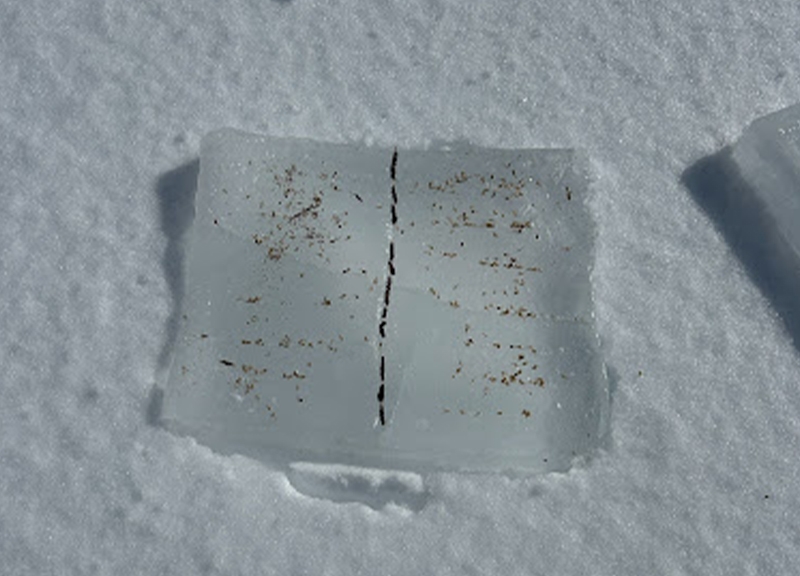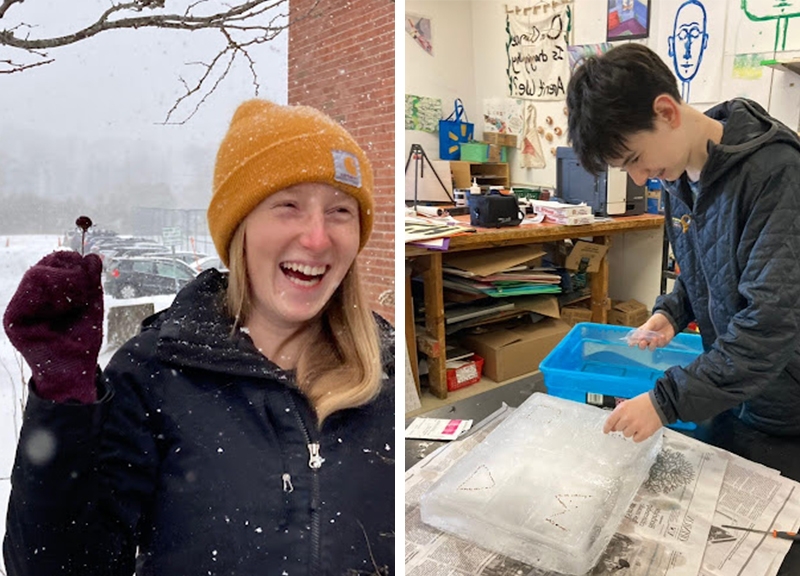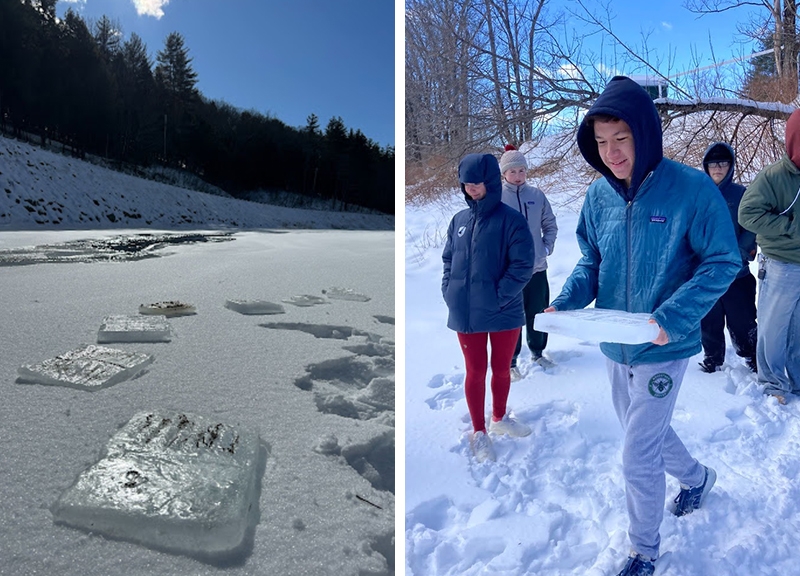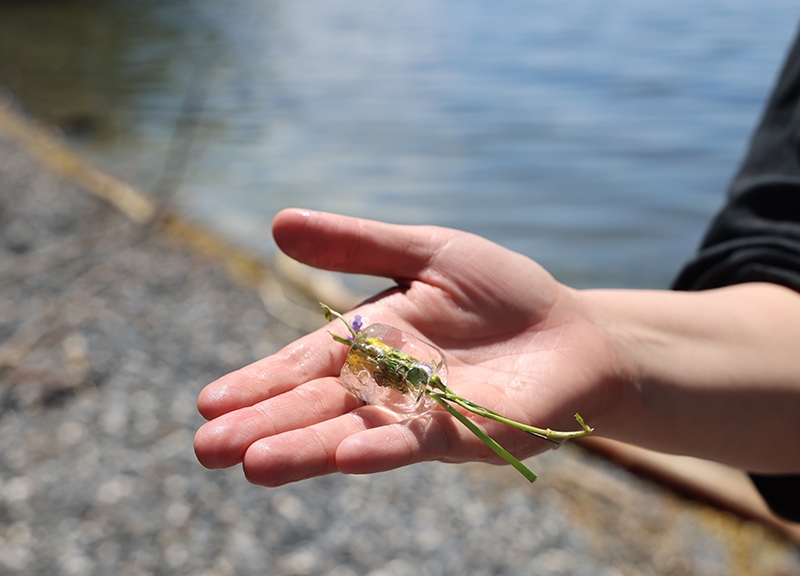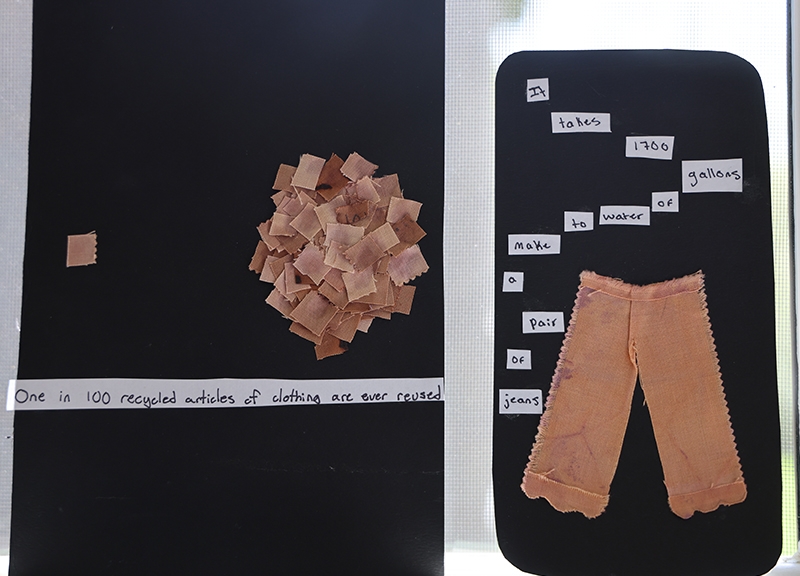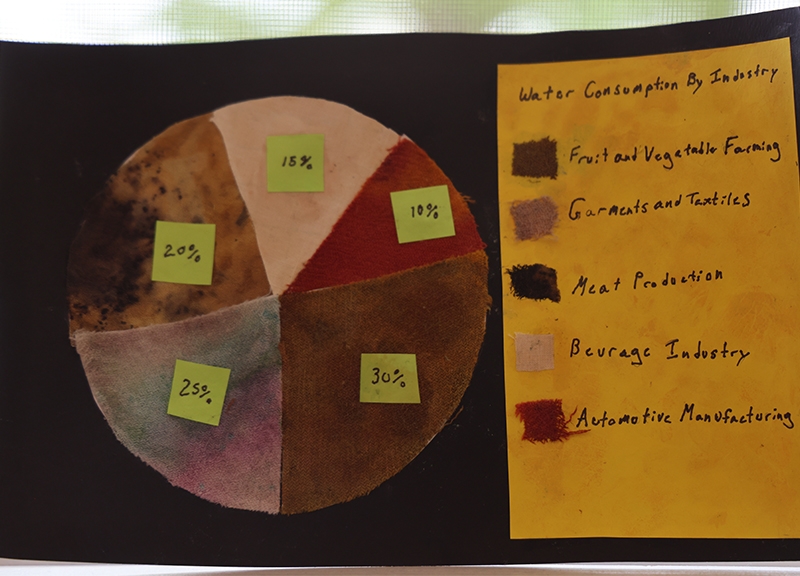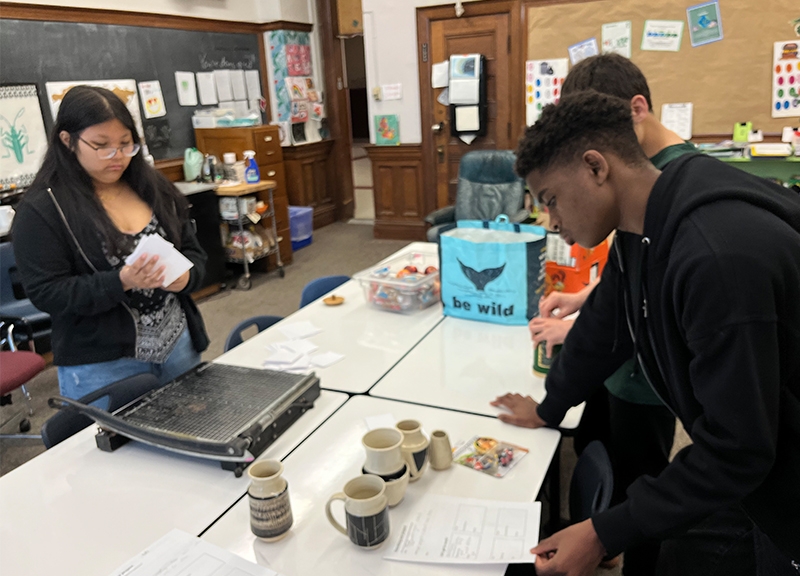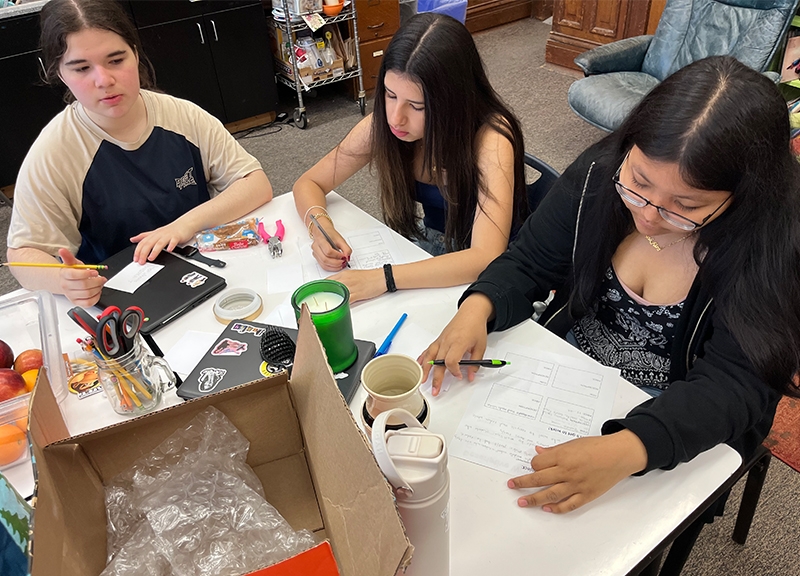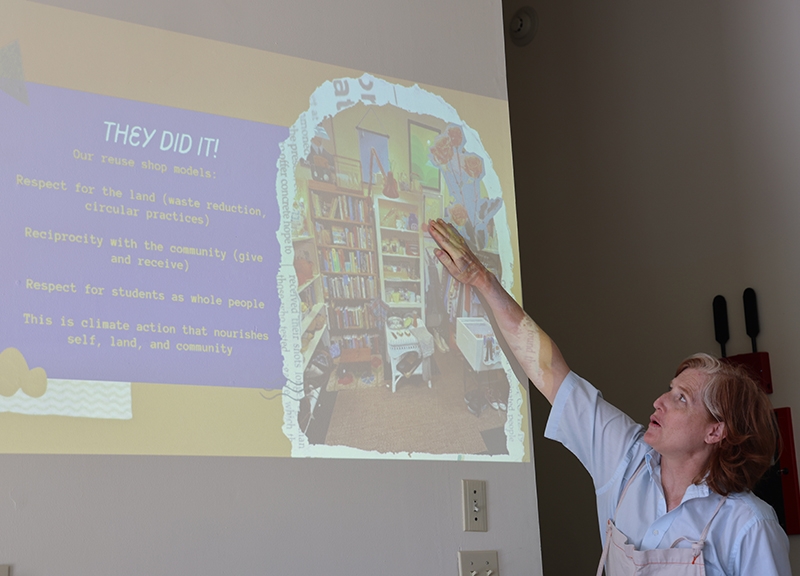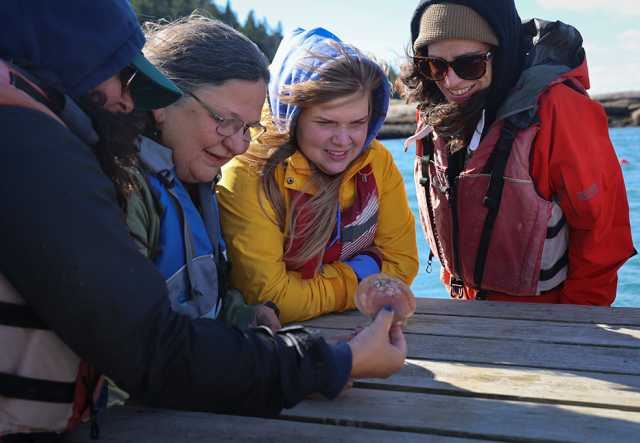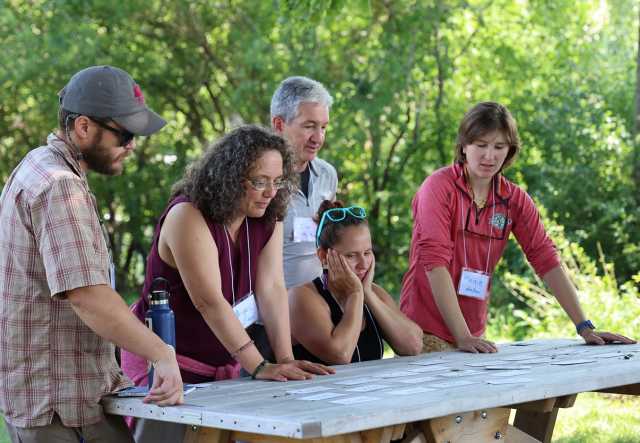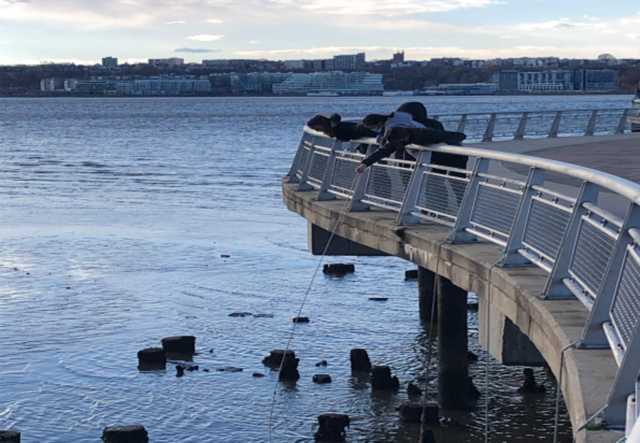Ice Books, Fabric Dyes, and Thrifting as Climate Action
Highlighting the work of three educators in our Climate Resiliency Fellowship
Learning that inspires climate action can happen in any subject area, as the work of these teachers shows.
Throughout the year-long Climate Resiliency Fellowship program, 16 teachers deepened their expertise in teaching about climate change, climate solutions, and in connecting students to their communities. Shelburne Farms staff educators Aimee Arandia Østensen and Emily Schaller facilitated the journey. In schools around the Northeast, this year’s 2024–25 fellows built resilience with their students, connecting them to the land and charting more sustainable paths into the future.
The work of artist Basia Irland served as inspiration for teacher Katrina Jimerson and students in her Eco Art Class. Irland creates “Ice Books,” ice sculptures embedded with seeds, which she launches into rivers around the globe in collaboration with communities and scientists. As the ephemeral books melt, the seeds inside are dispersed and plant themselves along riverbanks, slowing erosion and sequestering carbon.
Jimerson brought Ice Books to Woodstock, Vermont, in collaboration with her school’s agriculture department. Students learned which local plants could help reinforce the banks of the neighboring Ottauquechee River, which has experienced numerous floods in recent history, then made their own ice books containing seeds like elderberry, red osier dogwood, ferns, and goldenrod, some collected from plants around campus. They launched their books on the semi-frozen Ottaqueechee this winter, an endeavor that connected art, climate, and place. Jimerson led a mini version of this activity with Climate Resiliency fellows on Lake Champlain using ice cubes. As one student Betta reflected: “My ice book sculpting experience turned into a journey of facing nature’s realities. Multiple times my ice sculpture broke. The breaks I was able to fix symbolize the strength of living things. Breaks that were not fixable teach us about human’s and nature’s fragility.”
Teacher Laura Leavitt used the clothes we wear, the materials they’re made of, and the clothing manufacturing process as a way of getting her chemistry students to connect with climate impacts. The unit started with learning about the clothes dyeing process—how factors like temperature range and dye concentration influence the final product—and the environmental impacts of synthetic dye processes on communities around the world. The group then discussed the life cycle of synthetic versus natural materials, and the carbon impact of each. Then, it was time to experiment: Students were set free to design and conduct experiments with natural dyes and various fabrics, seeing firsthand how adjusting factors like pH can create different colors. Finally, students used the fabric they’d dyed to make data art related to the fashion industry, which were showcased in a school art show. Said Laura, “Over the course of this fellowship, I’ve become much more hopeful about making a difference on climate issues. I think my students learned this, too, that you can make an impact with small actions.”
As teacher Amanda Gustafson sees it, “Literacy is a tool for advocacy and transformation.” In her advanced writing class, 8th grade students originally from Congo, Nepal, Ukraine, and Somalia put that idea into action—taking climate action while sharpening their research and writing skills. The project began by making the problems of wasteful consumption real and personal. Students explored the lifecycle of consumer goods from production to disposal, examining the environmental toll of both manufacturing processes and the waste created when items are discarded. They read and summarized short texts on sustainability and fast fashion, reflected on their own habits as consumers, and analyzed social media messages around materialism and consumption. Through this, they began to build a deeper understanding of reuse culture as a powerful alternative.
Students created posters and persuasive writing pieces to educate peers, and, as a culminating activity, collected pre-loved items to resell in a local thrift store. To make this vision a reality, they wrote letters to the school’s principal and PTO, and even developed persuasive elevator pitches to solicit donations. The group now has items for sale at Vintage Inspired Marketplace in South Burlington, with all funds raised going to English language learning programs at their school. They hope to continue the project in the coming school year. “It’s about appreciating the items we have, but it’s also about creating a cyclical system with reused items that are more affordable. This is climate action that nourishes the self, land, and the community,” says Gustafson.
About the Climate Resiliency Fellowship
The Climate Resiliency Fellowship is a year-long professional learning opportunity for teachers in the northeast committed to learning, teaching, and taking action for the climate through interdisciplinary and place-based approaches. We choose to engage with the realities of climate change with hope and justice, while tending to individual and collective well-being.

